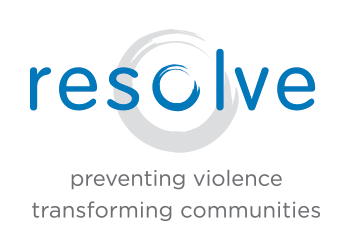Bystander intervention is always on our minds, and even more so after the horrific violence in Portland this past weekend.
While we don’t know all the details of this tragic incident, here’s what we do know:
Violence is a tool of social control. When people are made to fear being their authentic selves or be out in public (as a woman, as an “out” LGBTQ person, wearing a hijab), their lives become smaller. The impact they make on the world around them is diminished for fear of too much negative attention. The change that they can uniquely affect because of who they are is shuttered. The constant threat of violence naturally has that effect on those who are targeted for violence and hate crimes, which is the intention – conscious or not.
When people act as bystanders, or allies, they agree to share that risk. It hardly ever means shouldering the burden in place of the person affected, but hopefully means diminishing the impact for the target through an act of solidarity. Young people know this when talking about helping someone who is being bullied. Fear that the person will turn on them next is always in the forefront of their minds. As it should be.
Most opportunities for bystander intervention and acts of allyship expose us to less harm than what we witnessed in Portland this past weekend – but all do involve taking on some level of risk. And when we navigate our own levels of risk tolerance, what we’re really exploring is “How much am I willing to let this affect how I navigate the world? How much am I willing to consider worrying about speaking, worry about taking public transportation and having to choose between guilt and danger? How much am I willing to let this affect my life in order to help this person live more freely?”
If violence is a tool of social control, we must acknowledge that it wants us to stay silent, even as bystanders. It’s designed to divide us, to make us not ride public transportation, to avoid eye contact when someone is being harassed, to change the topic when someone makes a hurtful comment or “joke.” Liberation demands that we resist – that we find ways to persist and act in an unsafe world, to connect and speak up when someone is being hurt – whether they are present or not.

What Can I Do?
Practice for action: When watching these viral videos or TV shows featuring violence or hate crimes, imagine what you could do. If you practice creating plans instead of practicing being stuck in overwhelm, it can help prepare you for moments in your own life.
Confront denial: Acknowledge what is happening without minimizing the situation.
Create a risk assessment & safety plan: Assess the level of threat. Create a plan with contingencies to navigate an inherently volatile situation.
Determine your approach:
-
- De-escalate the aggressor: What words could you say to create a shift? What body language might be helpful?
Support the person targeted: Check in, if possible, about what they need; see that their safety and/or emotional needs are being met. Even sitting beside the person target can help them feel supported. - Mobilize others: Are there others that could act to help also? Providing them with clear direction can help activate them.
- Create a distraction: This could release the pressure in an intense situation, allowing some amount of de-escalation to happen naturally, or for the person targeted to get away.
- Aftercare for the person targeted or others: Oftentimes forgotten in these situations, caring for someone’s emotional or physical needs after an attack is just as important as intervention. Oftentimes in a situation involving more than one bystander, people take on different roles. All of these roles are necessary.
- Support accountability: People who act aggressively oftentimes attempt to avoid responsibility for their actions. Supporting accountability could be retelling what you witnessed to other community members, or helping maintain their presence in the area while others arrive.
- De-escalate the aggressor: What words could you say to create a shift? What body language might be helpful?
